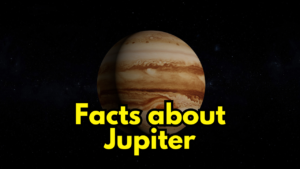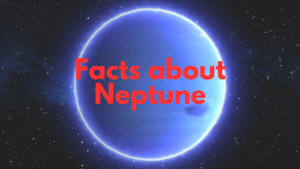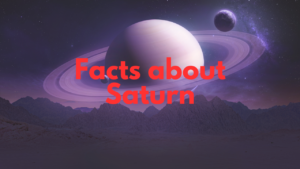
I had an early fascination with all things cosmic, and like many young boys my age, I grew up dreaming of becoming an astronaut. I wanted to explore the vast unknown of space and experience weightlessness firsthand. Today we are going to discuss 27 Amazing Facts about nasa Space Shuttles.
I was attracted by space shuttles because I loved everything about space, including the connection to the unknown, the phenomena of gravity, and traveling beyond the sky.
With 26 fascinating facts about the NASA space shuttles, from the well-known to the obscure, we hope to show our admiration and curiosity for these amazing machines.
On April 17, 2012, NASA’s space shuttle Discovery made its final voyage, traveling from Florida’s Kennedy Space Center to Washington, D.C., where it will go on display at the National Air and Space Museum of the Smithsonian Institution. The shuttle was transported there on the back of a modified 747 airplane.
These shuttles were not just technological wonders but also representations of human exploration and inventiveness. Every shuttle has a distinct past and contributed significantly to our growing knowledge of space. Every shuttle, from the recognizable Challenger to the ground-breaking Discovery, had a unique tale to tell. Let’s explore the fascinating world of NASA space shuttles and discover its mysteries.
Facts about NASA space shuttles No1:
Atlantis completed 31 missions, the first of which was in October 1985. Its final planned journey to the International Space Station (ISS) was in May 2010.
Facts about NASA space shuttles No2:
Seven astronauts perished in the Columbia explosion in 2003 while re-entering the atmosphere.
Facts about NASA space shuttles No3:
On its maiden voyage in 1981, the Columbia circled the planet 37 times before coming to rest. The Columbia was the first space shuttle to ever fly.
Facts about NASA space shuttles No4:
Three mission specialists, David Brown, Kalpana Chawla, Laurel Clark, a payload specialist, Commander, Ilan Ramon, and Michael Anderson, a shuttle pilot, Rick Husband, and shuttle commander, William McCool, made up the crew of the spacecraft on its last journey.
Facts about NASA space shuttles No5:
There is a dated Columbia memorial with the form of a shuttle at Arlington National Cemetery.
Fact about NASA space shuttles No6:
The Shuttle reached a maximum temperature of 3000°F, or about 1650°C, during the re-entry.
Fact about NASA space shuttles No7:
The Magellan, an interplanetary probe that mapped 98% of Venus’ surface, was launched by the Atlantis, making it the first space shuttle to accomplish this feat.
Facts about NASA space shuttles No8:
Because it depends on its own fuel supply, the Atlantis has the shortest missions of all the space shuttles, lasting up to 14 days at most.
Facts about NASA space shuttles No9:
An astronaut on a shuttle is given roughly 4 pounds (1.8 kg) of food per day to keep them going.
Facts about NASA space shuttles No10:
In 1998, John Glenn became the oldest person to travel into space while he was on board the Discovery.
Fact about NASA space shuttles No11:
The Columbia was destroyed by a piece of insulation that broke off and penetrated the wing.
Fact about NASA space shuttles No12:
The exterior of the Discovery shuttle has about 23,000 tiles.
Fact about NASA space shuttles No13:
The only shuttle ever named by children was the Endeavour, which was given its name in 1988 by the victors of a youth competition held in the United States.
Fact about NASA space shuttles No14:
During his stay aboard the space shuttle Endeavour, Mamoru Mohri made history as the first Japanese astronaut.
Fact about NASA space shuttles No15:
Sadly, the Enterprise prototype shuttle was never able to reach orbit. It is displayed in American museums with the other surviving shuttles.
Fact about NASA space shuttles No16:
When empty, the Endeavour weighed an incredible 171,960 pounds (78,000 kg) and could reach orbital speeds of 27,870 km/h (17,318 mph).
Fact about NASA space shuttles No17:
The International Space Station (ISS) has been docked at Russia’s space station multiple times and by a NASA shuttle 37 times as of 2011.

Facts about NASA space shuttles No18:
The Atlantis is constructed in half the time of its closest equivalent, the Columbia, and weighs around 4,000 pounds less than the ordinary car.
Facts about NASA space shuttles No19:
Pamela Melroy and Eileen Collins were the two female space shuttle commanders over the course of the thirty years of flying. Eileen was on the mission on Columbia.
Facts about NASA space shuttles No20:
To reach the Moon, the space shuttle would have to go 680 times farther than its average maximum flight distance of 350 miles, or over 565 kilometers.
Fact about NASA space shuttles No21:
During their stay in orbit, two out of the five space shuttles were destroyed, which is an incredibly high failure rate for contemporary travel.
Fact about NASA space shuttles No22:
Seven people were killed when the Challenger managed to explode during launch in 1986.
Fact about NASA space shuttles No23:
The craft needed just 73 seconds to lift off the ground and detonate.
Fact about NASA space shuttles No24:
Kathryn Sullivan was the first American woman to perform a spacewalk aboard the Challenger in 1984.
Facts about NASA space shuttles No25:
Out of all the orbiters, the Discovery has completed the most missions.
Fact about NASA space shuttles No26:
When visitors first see the Discovery, they frequently comment on how filthy and worn it is, instead of the bright white we always image, because of how many missions it has flown.
Fact about NASA space shuttles No27: Discovery Was in Orbit for the Whole Year
Discovery spent 365 days in space during the course of its 39 missions. It also set a new space shuttle record with 148,221,675 miles on its odometer. Discovery might have made more than 300 trips to and from the moon based on its total mileage.
For those of us who are passionate in all things celestial, the wonders of space are an endless source of knowledge, and as the facts above demonstrate, space shuttles are no exception.
This list is by no means exhaustive!
By doing further research on your own, you can discover a vast amount of information.





